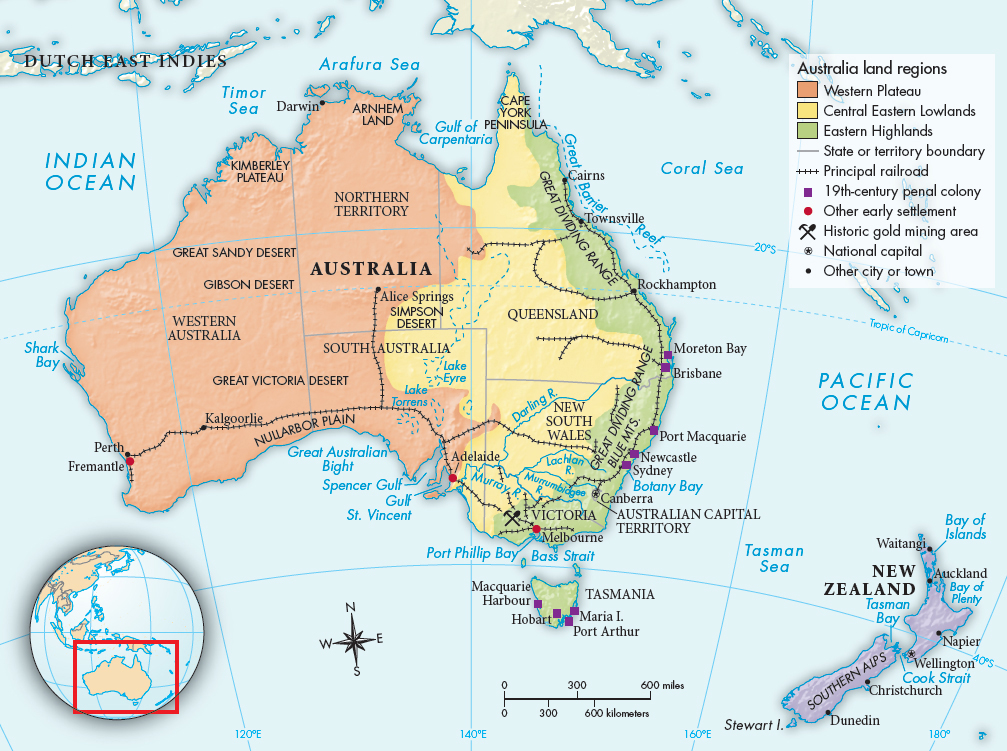Understanding World Societies:
Printed Page 800
Settler Colonies in the Pacific: Australia and New Zealand
The largest share of the Europeans who moved to the Pacific region in the nineteenth century went to the settler colonies in Australia and New Zealand (Map 26.2). In the 1770s the English explorer James Cook visited New Zealand, Australia, and Hawaii. All three of these places in time became destinations for migrants.
As discussed in Chapter 12, between 200 and 1300 C.E. Polynesians settled numerous islands of the Pacific, from New Zealand in the south to Hawaii in the north and Easter Island in the east. Thus most of the lands that explorers like Cook encountered were occupied by societies with chiefs, crop agriculture, domestic animals, excellent sailing technology, and often considerable experience in warfare. Australia had been settled millennia earlier by a different population. When Cook arrived in Australia, it was occupied by about three hundred thousand Aborigines who lived entirely by food gathering, fishing, and hunting. Like the Indians of Central and South America, the people in all these lands fell victim to Eurasian diseases and died in large numbers.

Australia was first developed by Britain as a penal colony. Between 1787 and 1869, when the penal colony system was abolished, a total of 161,000 convicts were transported to Australia. After the end of the Napoleonic Wars in 1815, a steady stream of non-
Not everyone in Australia was of British origin, however. Chinese and Japanese built the railroads and ran the shops in the towns and the market gardens nearby. Filipinos and Pacific Islanders did the hard work in the sugarcane fields. Afghans and their camels controlled the carrying trade in some areas. But fear that Asian labor would lower living standards and undermine Australia’s distinctly British culture led to efforts to keep Australia white.
Australia gained independence in stages. In 1850 the British Parliament passed the Australian Colonies Government Act, which allowed the four most populous colonies — New South Wales, Tasmania, Victoria, and South Australia — to establish colonial legislatures, determine the franchise, and frame their own constitutions. In 1902 Australia became one of the first countries in the world to give women the vote.
By 1900 New Zealand’s population had reached 750,000, only a fifth of Australia’s. One major reason more people had not settled these fertile islands was the resistance of the native Maori people. They quickly mastered the use of muskets and tried for decades to keep the British from taking their lands.
Foreign settlement in Hawaii began gradually. Initially, whalers stopped there for supplies, as they did at other Pacific Islands. Missionaries and businessmen came next, and soon other settlers followed, both whites and Asians. A plantation economy developed centered on sugarcane. In the 1890s leading settler families overthrew the native monarchy, set up a republic, and urged the United States to annex Hawaii, which it did in 1898.